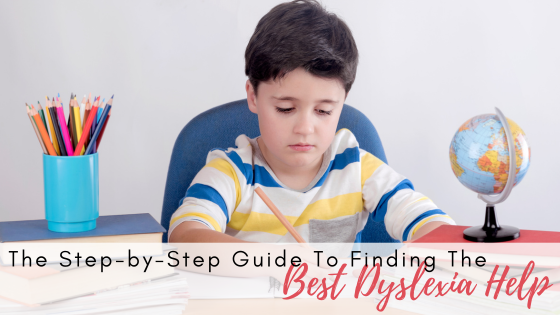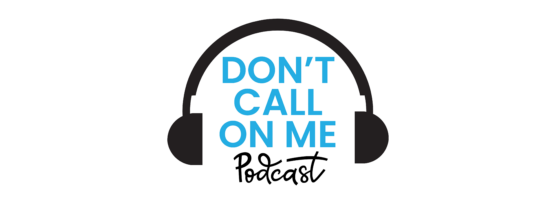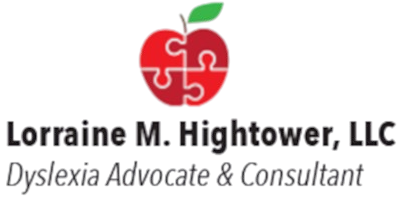
The Step-by-Step Guide To Finding The Best Dyslexia Help
One very cool concept to understand in the field of brain science is the fact that our brains are ever-changing. Learning new things can help our brains to create, develop, and connect neural pathways. The good news about this is that our brains provide us with limitless learning potential. For students with a specific learning disability like dyslexia, it is so important to understand that a learning difference is not necessarily a detriment. Struggling and making mistakes can be a helpful part of learning—teaching a student resilience, grit, and perseverance. And practicing difficult things can help the brain to learn to work harder as it gains new knowledge. Moreover, adding in multisensory approaches to learning can help to engage the brain even more—enhancing skills in reading, comprehension, and literacy overall. Does a dyslexic student in your life need some academic help? One-on-one dyslexia therapy is one of the best ways to help activate the learning power of the brain. Read on to discover the step-by-step guide to finding the best dyslexia help.
Ensure that you’ve had an expert evaluation. Has your student been officially diagnosed with dyslexia, or do you just suspect that he or she has a learning disability? A clear diagnosis can help set you on the right path for the best treatment options. You can work with a psychologist, an educational therapist, or a diagnostician in order to formally diagnose dyslexia or another disability. These professionals can also recommend some specific programs and strategies for dyslexia help.
Learn more about dyslexia. Maybe you have dyslexia, or maybe your child’s dyslexia diagnosis is your first experience with this learning disability. No matter what your level of knowledge and experience with dyslexia is, it can be so beneficial to know that there are some solid resources for parents and families. If you’re looking to discover more details about dyslexia and different learners, some of these official websites include: The International Dyslexia Association (the IDA), the National Center for Learning Disabilities, and Understood.
Understand your options for help. There are a few different ways to seek help for dyslexia. If your child is a student in a school—whether public or private—you can reach out to teachers and staff to get an understanding of the academic help or interventions that are available for your child. While support at school can be helpful, it is often a good idea to seek more assistance outside the classroom. Some families choose to hire tutors for their students who have dyslexia; this is simply one other option that tends to focus on getting homework and reading done. A more effective option that is convenient and available to families is online one-on-one dyslexia therapy. These kinds of sessions are offered by Dyslexia on Demand, and the scheduling flexibility and consistency can help students to achieve results. In addition, dyslexia therapy focuses more on the root of the issue than tutoring.
Get familiar with Orton-Gillingham. When it comes to successful dyslexia programs, Orton-Gillingham is the gold standard. This is a structured, multisensory approach that is tried and true. At Dyslexia on Demand, Orton-Gillingham based language programs are a foundational part of dyslexia therapy. These programs help students to achieve and maintain solid skills in word recognition, fluency, and comprehension. This evidence-based literacy and language instruction is built on steady, tailored progress for each individual student.
Discover dyslexia therapy. Dyslexia therapy is unlike the other forms of help for students with dyslexia. At Dyslexia on Demand, we offer a specific therapy program that is administered by specially trained Certified Academic Language Therapists (CALT). Orton-Gillingham-based intervention programs make up the material for therapy sessions. Sessions at Dyslexia on Demand are diagnostic with explicit, systematic, multisensory, structured programs. CALTs will work with students at a high frequency over a long period of time to complete a dyslexia program. This approach can help to inspire the development of fluency and comprehension in students.
Find a therapist. If you’re seeking the best kind of help for your student with dyslexia, you are going to want to find a Certified Academic Language Therapist, also known as a CALT. CALTs represent the highest level of trained dyslexia professionals, and they’re qualified to implement the therapeutic grade, Orton-Gillingham-based dyslexia intervention programs. At Dyslexia on Demand, students work consistently with the same CALT for the duration of their program. This consistency with qualified experts brings students rich educational experiences.
Are you ready to take the next step to find the best dyslexia help for your student? The experts at Dyslexia on Demand are ready to help you. Dyslexia on Demand’s mission is to make dyslexia therapy accessible to all students. Choosing Dyslexia on Demand means choosing the best dyslexia help available. Discover more about Dyslexia on Demand at their website online. To learn more or to ask any questions you have about Dyslexia on Demand’s mission with dyslexia therapy, give us a call at 888-292-3906.
References
International Dyslexia Association. (n.d.). Dyslexia basics. https://dyslexiaida.org/dyslexia-basics/
National Center for Learning Disabilities. (n.d.). Dyslexia. https://www.ncld.org/
Understood. (n.d.). Dyslexia: What it is, causes, signs, and treatment. https://www.understood.org/
Shaywitz, S. E., & Shaywitz, B. A. (2020). Overcoming dyslexia (2nd ed.). Vintage.
Academy of Orton-Gillingham Practitioners and Educators. (n.d.). About Orton-Gillingham. https://www.ortonacademy.org/












